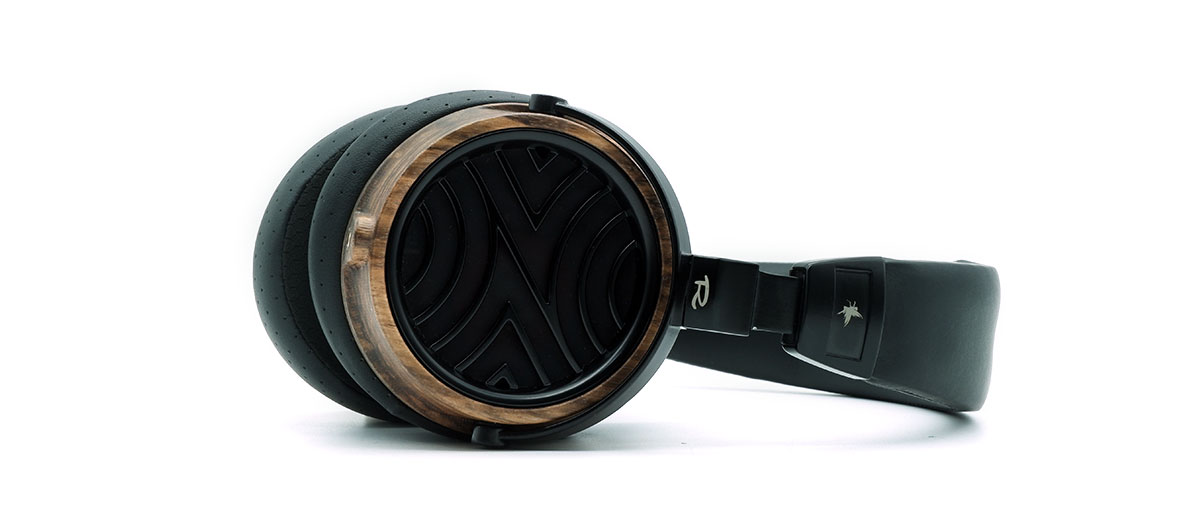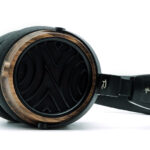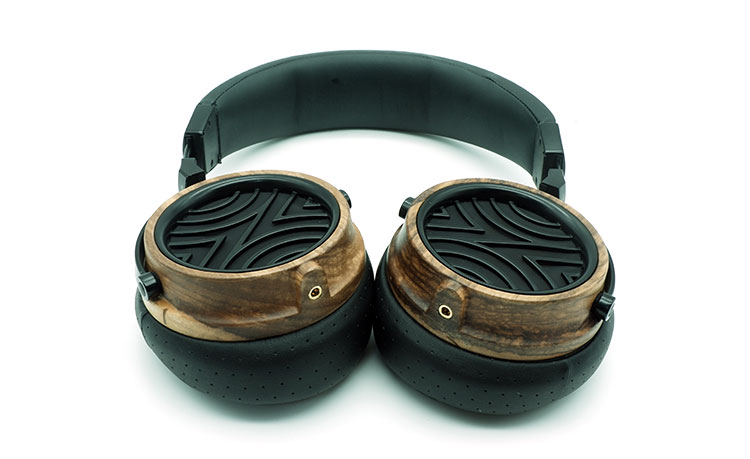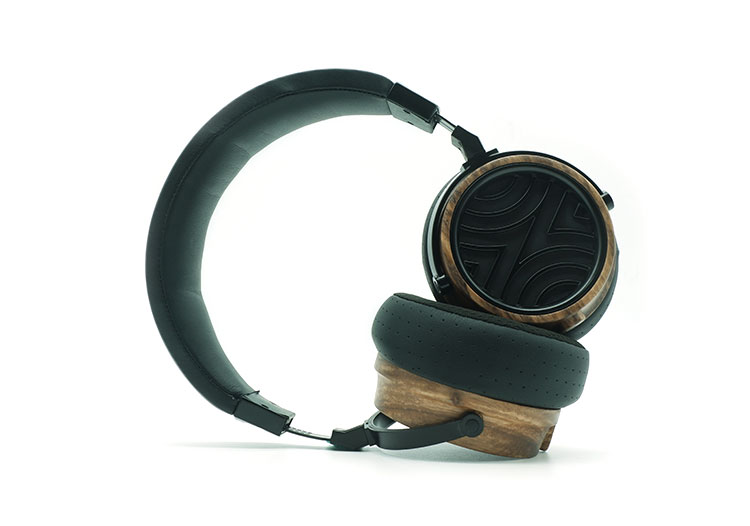Little Dot GYFU is an open-back circumaural headphone with a unique triple dynamic driver design and a dual-tuning mode. It is priced at $549.99
Disclaimer: The Little Dot GYFU sent to us is a sample in exchange for our honest opinion in this review. We thank the team at Little Dot and Linsoul for giving us this opportunity.
To read more about Little Dot reviews previously done on Headfonics please click here.
Note, this 2-page review follows our new scoring guidelines for 2020 which you can read up on here.
Little Dot is a company that is known for its presence in the desktop tube amplifier market, but they have slowly been producing some IEMs as of late. Some of their IEMs like the Cu Rad, Cen, Wyn, and KIS have all come through our office for a thorough review.
Aside from IEMs, Little Dot has also added a headphone in their lineup, and surprisingly it isn’t a bare-bones entry-level headphone either.
Their latest release, the GYFU, which is short for “gift for you”, is a proper mid-tier open-back headphone that’s ready to take on some stiff competition in a crowded market segment.

Tech Highlights
Little Dot touts the GYFU as a triple driver headphone, where it’s composed of a 50mm heavy-caliber nanocomposite dynamic driver as the main driver, and it is assisted by an 8mm PEK high polymer material for the high frequencies and a 32mm dynamic driver for the bass frequencies.
These drivers are arranged in concentric formation inside the earcup, while the earcup is equipped with a bass resonance chamber in each earcup.
The concentric drivers are mounted with an angle to the front of the driver, while the earpads are designed to have an 8° angle to create different tunings when the earpads are twisted. This results in a more versatile headphone that can be customized to suit the preferences of the listener.
Aside from the drivers, the GYFU also features polished zebrawood baffles that dampen the natural resonant frequencies of the drivers and the baffle.
Design
When I first looked at the Cu GYFU, I was immediately drawn to the wooden earcups. The ear cups are made of polished zebrawood, with a smooth but natural finish without an additional coat of varnish which helps show off the striking wood grain.
The headband is a standard adjustable spring-steel with a ratchet adjustment system embedded into the headband itself. Though the ratchet system is a discrete system, the adjustments are fine enough that I don’t notice any fit issues between each adjustment step.
On top of the headband, you get a leather wrap around a layer of foam. The foam covers a metal headband underneath though, so it feels durable despite being soft all over.
Both yokes have full articulation horizontally and vertically. However, the articulation is not too soft, so it doesn’t end up flopping around when you take them off or get them. This gives both some flexibility in terms of dialing in on the proper fit and the headphones generally staying in that shape when you pick them back up.
Finally, the earcups are made of soft perforated leather earpads that can be rotated. They can also easily be removed and replaced in case they wear down later on. The lip that keeps the earpads secure doesn’t go all the way around the earcup, and it also allows fitting in new earpads easier as it assists in sliding in the earpads.
Comfort & Isolation
Having a fully articulating headphone yoke system to headphones sure helps a lot with comfort. The GYFU can be adjusted to have a perfect fit on most heads. It also helps that the earpads and the headband are both made of soft foam and leather.
When I first looked at the GYFU, I was having some fears that it earpads would be too small. Surprisingly, the earpads have holes that are large enough to fit my ears comfortably inside without touching the internal pad walls or the inside of the headphone.
Of course, being an open back headphone, the GYFU doesn’t isolate particularly well. However, the seal that the earpads form around my ears is tight enough that it ensures that the sound only comes from the earcup opening.
Stock Cable
The stock cable that arrives with the GYFU can be customized upon ordering. It can be terminated in either 3.5mm or 4.4mm balanced. With this sample, Little Dot sent over the GYFU with a 3.5mm single-ended connection together with an adaptor for ¼” single-ended connections.
The overall aesthetic of the cable is coherent, where all terminations and even splitter and adjustment mechanisms have a similar-looking metal piece. These metal pieces are surprisingly heavy, so I can see how they give the cable an overall sense of heft and durability.
Cloth is used to cover the entire length of the cable, where wires for each side of the GYFU are inside a cloth tube, then after splitter, the left and right channel are in 2 stands that are braided together. While the cable is soft all throughout, I worry that the part of the cable after splitter might unravel easily down the road.
Packaging & Accessories
Being designed as a “gift for you” by Little Dot, they send over the GYFU with a wooden box that doubles as a presentation case. The wooden box is engraved with the Little Dot branding, as well as the Little Dot and Cu Audio logo.
Upon opening the presentation box, soft velvet covers the foam inserts inside. The headphones and the cable are both nestled inside their respective cutouts, so they will remain secure until they arrive with the final customer.
Although I don’t typically use the presentation boxes that come with my headphones, I’m impressed at the level of quality of the presentation box that arrives with the GYFU. It looks like a handcrafted box that matches the quality of the finish of the GYFU’s earcups.
Sound Impressions
Bass
It’s typical for dynamic driver-based headphones to have a certain amount of roll-off that drops off the sub-bass response. With the GYFU, the bass doesn’t drop off early, as it extends well into the sub-bass region, allowing ethereal bass notes to easily flood the soundscape.
Mid-bass notes on the other hand have a more forward presentation, making them sound weightier. This makes drum hits and bass guitar notes sound more planted and physical.
The quality of the mid-bass is less rounded leaning towards the more dispersed and textured side of things, so plucking of upright basses are conveyed fairly realistically.
Generally, the bass on the GYFU remains controlled, so it doesn’t bleed into any of the other frequencies, while some rough edges are more glossed over most of the time.
Mids
When talking about the vocal range on the GYFU, it isn’t particularly emphasized, but it doesn’t end up being recessed either. The fundamental frequency of vocal tracks is there, while details in the vocal range are generally present, but end up being overshadowed by the more forward harmonic overtones.
Instruments such as guitars and pianos on the other hand take on a planted fundamental tone, but also have a brighter sheen due to their timbre. When listening to cellos, there is a flowy overall character, so it doesn’t take much for cellos to be convincing with the GYFU.
The midrange on the GYFU can’t be classified as relaxed, instead, it leans towards the more forward side of neutral, while presenting a very honest presentation of the midrange.
Treble
With the GYFU being equipped with an 8mm PEK driver, I was expecting the GYFU to be glaringly bright. All things considered, the GYFU’s treble presentation is quite controlled allowing cymbal hits to be brought forward in the mix while not standing out more than it has to.
The lower treble uptick also imbues midrange instruments with a brighter harmonic tilt, giving mid-range instruments and vocals that extra sheen. This allows the midrange instruments to seem clearer than usual, while textural information cannot be easily picked out.
With the addition of a driver dedicated to the treble frequencies, it ensures that the GYFU will remain extended even at the extremes. So a sense of airiness is easily perceived, allowing overtones of high-pitched instruments to shine through.
Soundstage
With the treble extension, the GYFU easily conveys an open soundstage that remains expansive. So it doesn’t feel like there is a wall, instead, it faithfully recreates the room according to what the recording has captured.
The more forward nature of the GYFU also translates into having images well within your head most of the time. Where the images formed are almost shouting into your ears, and just inside my head. However, when it is in the recording, the GYFU can also push out the images into the soundstage, producing good depth.
Spatial cues are formed with a good amount of directionality, so most images are just formed at the directional extremes, or in the form of a coherent center inside my head. Between the extremes and the center image is sort of a dead zone, so cues don’t form there too often.
It’s easy enough for the GYFU to form images in the right places accurately, so it isn’t that hard to find where things are within the soundscape. However, when it comes to delineating between the instrument’s cues, they tend to blur together within the given soundstage.
Click on page 2 below for pairings and select comparisons





